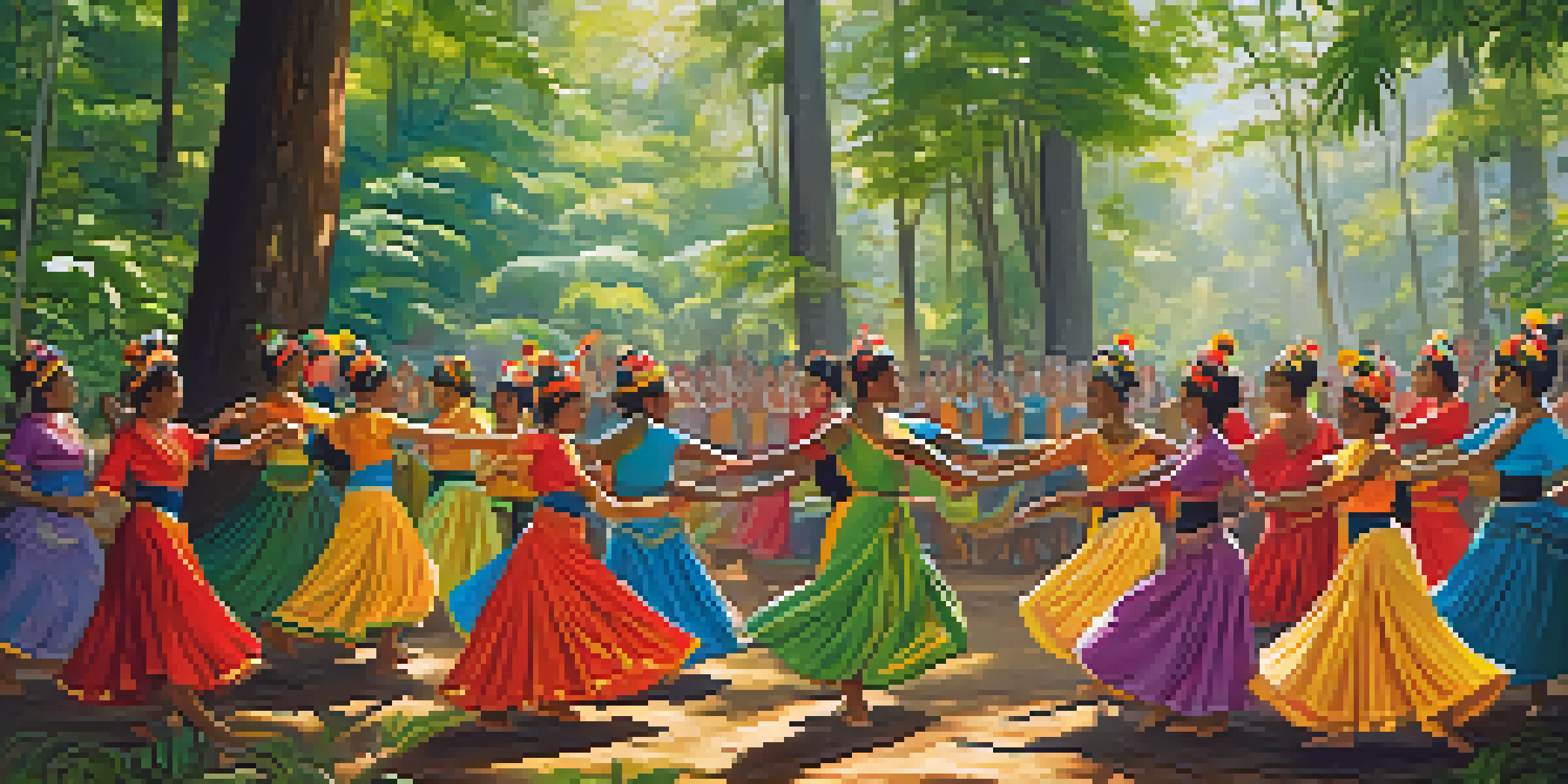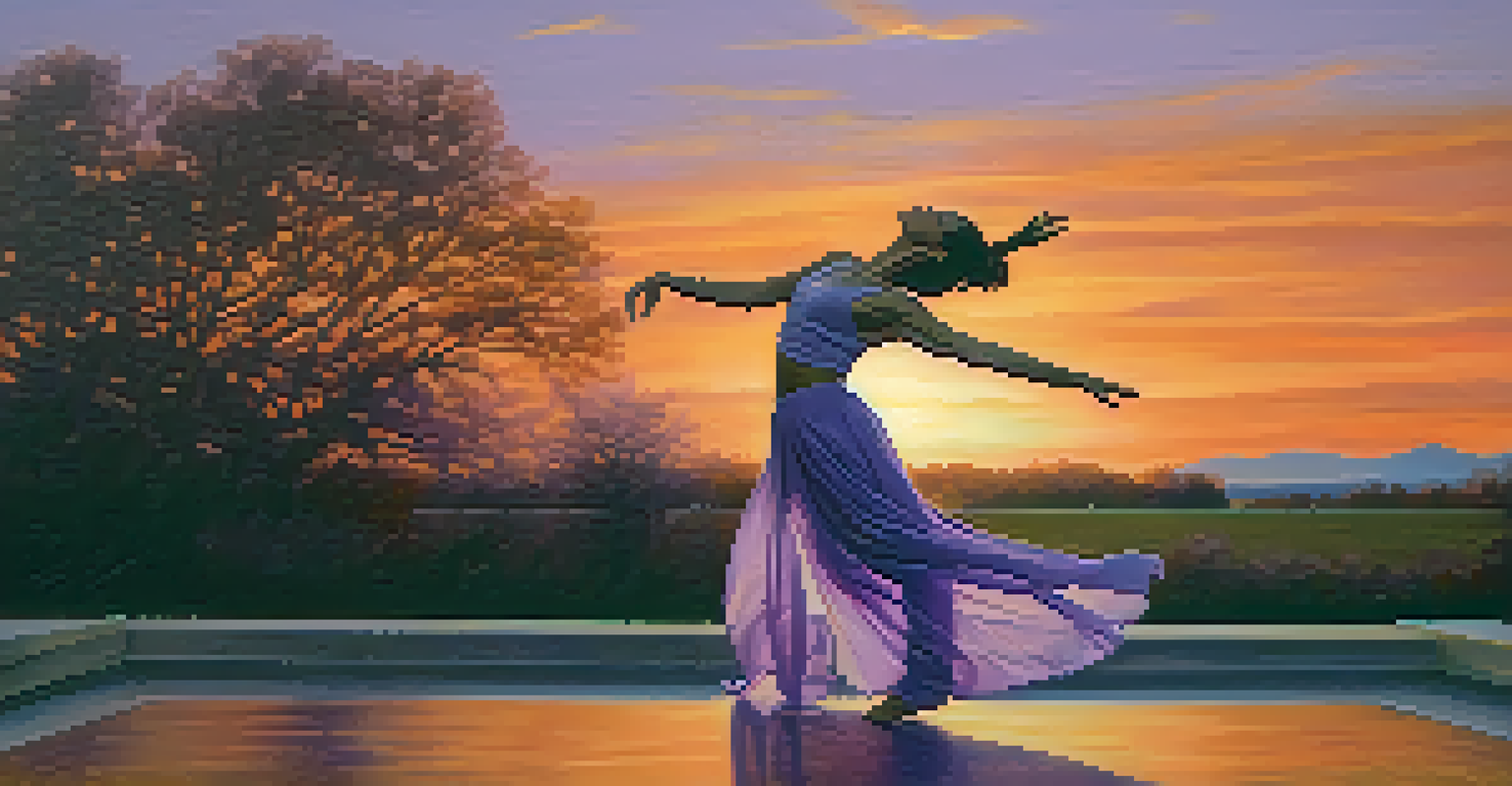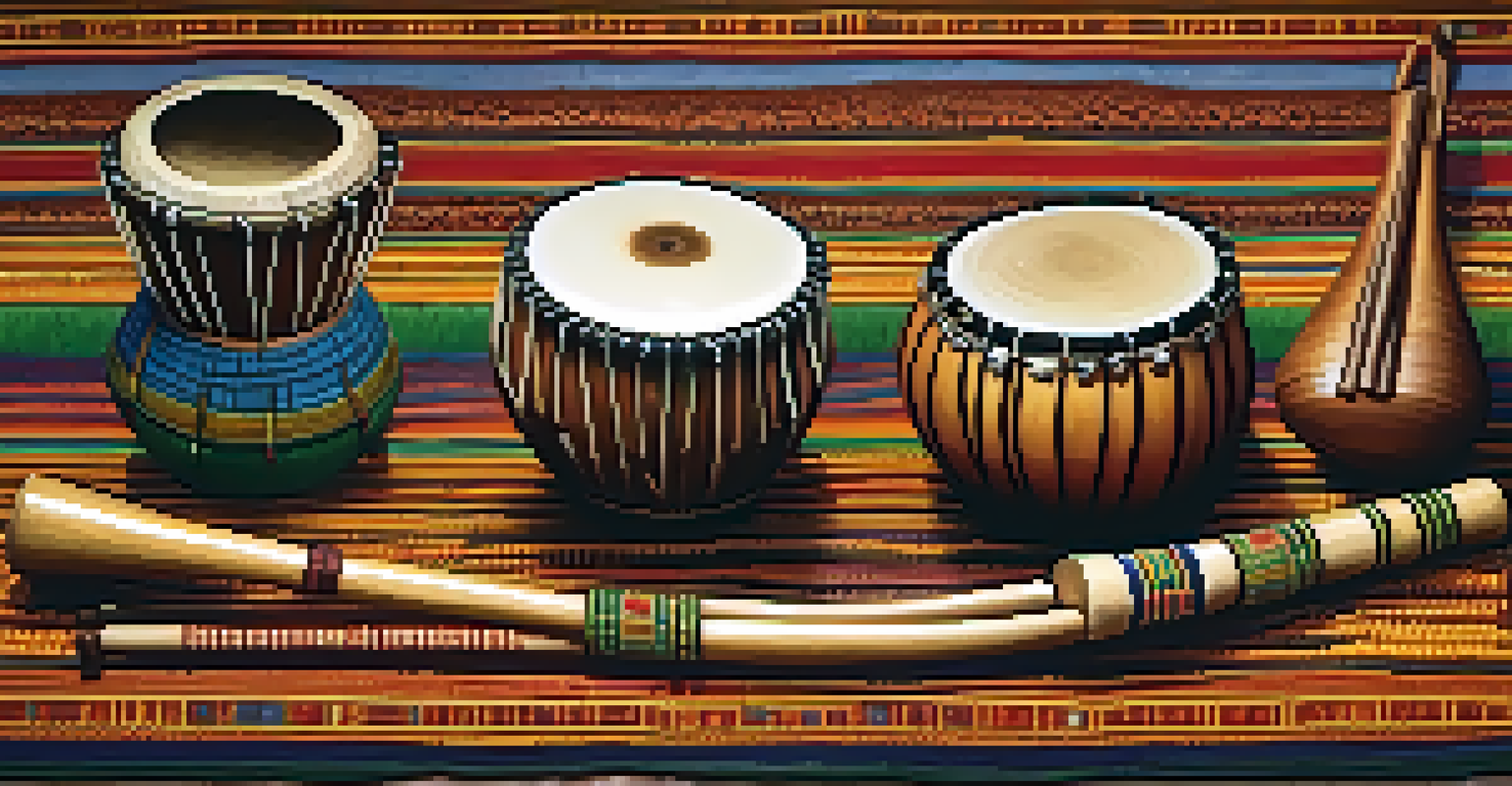Ritual Dance in Indigenous Cultures: A Cultural Analysis

Understanding Ritual Dance: Definition and Purpose
Ritual dance is a form of expressive movement that holds deep cultural significance in many Indigenous societies. It often serves as a means to connect with the spiritual world, celebrate community, and pass down traditions. These dances are not merely performances; they encapsulate stories, beliefs, and values that resonate within the Indigenous identity.
Dance is the hidden language of the soul.
In many cultures, ritual dance is performed during important events such as weddings, harvests, and religious ceremonies. Each movement and rhythm is carefully choreographed to convey specific meanings, making the dance a vital part of cultural expression. For instance, the Hopi people use dance to honor their deities and to ensure good harvests, showcasing the integral role of dance in their agricultural practices.
Moreover, the communal aspect of ritual dance fosters a sense of belonging and unity among participants. As individuals come together to perform, they strengthen their bonds, not only with each other but also with their ancestors and the natural world. This connection is crucial, particularly in societies where oral traditions are paramount for cultural preservation.
The Role of Music in Ritual Dance
Music is a fundamental element of ritual dance, providing rhythm and enhancing the emotional impact of the performance. Traditional instruments, like drums, flutes, and rattles, create a soundscape that guides dancers and captivates audiences. The beats often reflect the heartbeat of the community, making the experience deeply resonant.

In many Indigenous cultures, the lyrics of songs performed during ritual dances tell stories of creation, history, and spirituality. These songs serve as a form of oral tradition, passing down knowledge and experiences from one generation to the next. For example, the Inuit use throat singing in their dances, which not only entertains but also connects them to their heritage and environment.
Ritual Dance Preserves Culture
Ritual dance serves as a vital tool for preserving Indigenous cultures, connecting communities to their heritage and educating younger generations.
The interplay between dance and music also allows for improvisation, enabling dancers to express personal emotions while remaining rooted in tradition. This flexibility keeps the practice alive and relevant, allowing contemporary issues to be woven into age-old narratives, thus ensuring that ritual dance evolves while retaining its core significance.
Symbolism in Ritual Dance Movements
Each movement in ritual dance is imbued with symbolism, often representing elements of nature, spiritual beliefs, or social values. For instance, a specific gesture may mimic the movement of an animal, signifying a connection to the natural world and its creatures. This illustrates the Indigenous belief in the interdependence of all living beings.
Cultural preservation is not just about saving artifacts; it’s about keeping the stories alive.
Additionally, colors and patterns used in costumes can carry specific meanings that enhance the narrative of the dance. A dancer dressed in bright colors might symbolize joy and celebration, while darker hues could represent mourning or reflection. This visual language complements the movements, providing deeper layers of understanding for both the performers and the audience.
The symbolism in these dances often extends beyond the physical performance; it serves as a reminder of cultural history and identity. By embodying these movements, dancers not only honor their ancestors but also reaffirm their commitment to preserving their culture in a rapidly changing world.
Ritual Dance as a Means of Cultural Preservation
In an era of globalization, ritual dance plays a crucial role in preserving Indigenous cultures. As modern influences threaten traditional ways of life, these dances serve as a powerful reminder of heritage and identity. Communities often gather to practice and celebrate these dances, reinforcing their cultural ties and educating younger generations.
Organizations and cultural centers are increasingly recognizing the importance of ritual dance as a tool for cultural preservation. Workshops and performances are held not only to teach the art of dance but also to instill a sense of pride and belonging among participants. This grassroots effort helps maintain the integrity of these practices, ensuring they are passed down authentically.
Music Enhances Dance Experience
Music plays a fundamental role in ritual dance, providing rhythm and emotional depth while conveying stories and traditions.
Moreover, by sharing these dances with broader audiences, Indigenous communities can foster understanding and respect for their cultures. This exchange encourages dialogue and appreciation, creating a bridge between different cultures and promoting the importance of diversity in our global society.
Ritual Dance in Contemporary Indigenous Life
Today, ritual dance continues to hold a prominent place in the lives of many Indigenous people, adapting to contemporary contexts while maintaining traditional meanings. Modern performances may take place in various settings, from community gatherings to international festivals, showcasing the vibrancy of Indigenous culture. This visibility helps challenge stereotypes and misconceptions about Indigenous peoples.
Many Indigenous artists are also incorporating elements of modern dance and music into their performances, creating a fusion that resonates with younger generations. This blend of tradition and innovation illustrates the dynamic nature of culture, proving that it can evolve while still honoring its roots. For example, Indigenous hip-hop artists often use traditional dance moves in their music videos, bridging the gap between past and present.
Through these adaptations, ritual dance becomes a platform for addressing contemporary issues, such as social justice and environmental concerns. By using their art to convey powerful messages, Indigenous dancers can engage audiences in meaningful conversations, demonstrating the relevance of their cultural practices in today's world.
The Spiritual Significance of Ritual Dance
For many Indigenous cultures, ritual dance is a spiritual practice that connects dancers to their ancestors and the divine. These dances are often performed as offerings or prayers, invoking blessings for the community or individuals. The act of dancing itself can be seen as a form of meditation, allowing participants to enter a trance-like state where they can access deeper spiritual insights.
The movements, music, and communal experience work together to create a sacred space, fostering a sense of unity with the universe. Many dancers report feeling a profound connection to their heritage and the earth while performing, as if they are channeling the wisdom of their ancestors. This spiritual aspect reinforces the idea that dance is not just an art form but a vital component of spiritual life.
Challenges to Ritual Dance Today
Ritual dance faces significant challenges, including cultural appropriation and urbanization, which threaten its practice and cultural integrity.
Additionally, the cycle of life and death is often reflected in these dances, reminding participants of their place in the larger narrative of existence. Through ritual dance, communities can celebrate life, honor their dead, and seek guidance for the future, making it a powerful tool for spiritual expression.
Challenges Facing Ritual Dance Today
Despite its significance, ritual dance faces numerous challenges in the modern world. Cultural appropriation, where elements of Indigenous dance are borrowed without understanding or respect, can undermine the integrity of these practices. This not only distorts the culture but also contributes to the erasure of its true meaning and significance.
Additionally, urbanization and globalization pose threats to traditional practices. As Indigenous peoples move to urban areas, they may find it difficult to maintain their cultural rituals, including dance. This disconnection can lead to a loss of cultural identity, as younger generations may not have the opportunity to learn and participate in traditional dances.

Efforts are being made to combat these challenges, with many communities advocating for the protection of their cultural practices. Through education, awareness campaigns, and collaborative projects with non-Indigenous allies, they strive to ensure that ritual dance remains a vibrant part of their cultural landscape, empowering future generations to embrace their heritage.